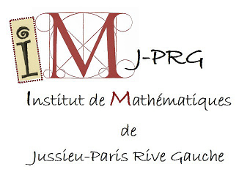| Résume | Late in the 19th century, A. A. Markoff initiated an extensivetheory of the minima of indefinite binary quadratic forms, or, whatis the same, extending Hurwitz's Theorem of diophantineapproximation. He showed in particular that these minima begin with acountable discrete spectrum which monotonically increases to 3. Earlythe 20th century, work of L. E. Ford then implies that these valuesare related tothe geometry of the modular surface.Some forty years later, H. Cohn recognized a connection betweenthese initial values of Markoff's spectrum and certain closedgeodesics on the so-called homology cover of the modular surface. Inparticular, the Markoff numbers, which comprise this initialcountable set of values of the spectrum, correspond one-to-one to thesimple closed geodesics on a hyperbolic once-punctured torus$\Gamma'\backslash mathcal{H}$ which is a six-fold cover of themodular surface. The same result holds if $\Gamma'$ is replaced by$\Gamma(3)$ or $\Gamma^3$. Next, C. Series suggested thenvestigationthe once self-intersecting closed geodesics of these surfaces andtheir values in the Markoff spectrum.This is exactly what D. Crisp and W. Moran did. They showed thatthere are two classes of these geodesics, and that the moreinteresting of these, their proper single self-intersecting orPSSI geodesics, have Markoff values quite low in the spectrum. Thesevalues are given by formulae virtually identical to those of theinitial portion of the spectrum.Crisp and Moran conjectured that these values were (also)isolated, and they established this for first 26 examples. Thisconjecture also has a charming geometry, especially on $\Gamma^3\backslash mathcal{H}$, which permits one to come close to provingit. However here is , at the moment, an obstruction. |

